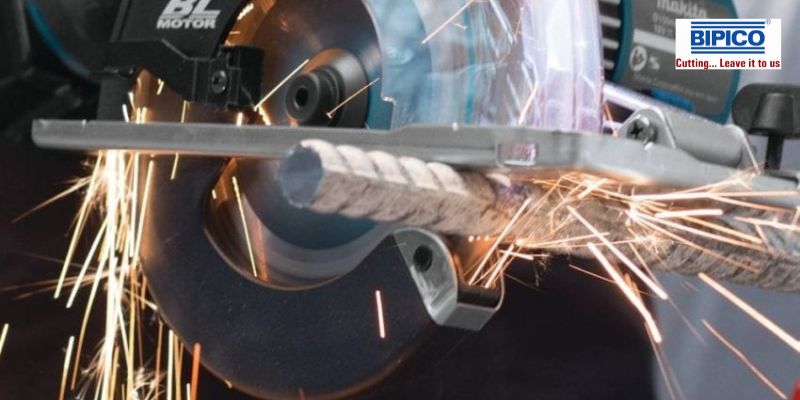Considerations to Make When Cutting Metals with Metal Cutting Saws
Metal cutting is crucial in various industries, including manufacturing, construction, and fabrication. To achieve precise and efficient cuts, professionals rely on metal cutting saws. These powerful tools allow for shaping and manipulating metal materials to meet specific project requirements. However, using metal cutting saws requires careful consideration of various factors to ensure safety, accuracy, and optimal results. In this article, we will explore the key considerations when cutting metals with metal cutting saws, providing valuable insights and tips for achieving successful outcomes.
1. Selecting the Right Saw Blade
One of the primary considerations when cutting metals is selecting the appropriate saw blade. Different types of metals require specific blade configurations to ensure effective cutting. For example, a carbide-tipped blade is ideal for cutting through ferrous metals like steel or iron due to its durability and heat resistance. On the other hand, non-ferrous metals such as aluminium may require a blade with finer teeth to prevent material clogging and ensure smoother cuts. By choosing the right saw blade, you can enhance cutting performance and extend the lifespan of your equipment.
2. Ensuring Proper Blade Tension
Maintaining the correct blade tension is crucial for optimal cutting results. A loosely tensioned blade can lead to vibration and imprecise cuts, while an overly tight blade can cause excessive wear on the saw's components. Following the manufacturer's guidelines is essential to ensure the blade is properly tensioned. Regularly inspecting the tension and making necessary adjustments will help maintain cutting accuracy and reduce the risk of accidents.
3. Lubrication and Cooling
Lubrication and cooling play a significant role in metal-cutting operations. The cutting process can generate excessive heat without adequate lubrication, leading to blade dullness and material deformation. Applying a suitable cutting fluid or coolant to the cutting area helps dissipate heat, reduce friction, and prolong the blade's life. Lubrication enhances the overall cutting performance, resulting in cleaner cuts with minimal burrs or imperfections.
4. Safety Precautions
Metal cutting involves inherent risks, and prioritizing safety is paramount. When operating metal cutting saws, wear appropriate personal protective equipment (PPE), including safety glasses, gloves, and ear protection. Familiarize yourself with the specific safety guidelines the manufacturer provides for your particular saw model. Furthermore, ensure the work area is well-ventilated to prevent the buildup of hazardous fumes and maintain a clear line of sight during the cutting process.
5. Securing the Workpiece
It is crucial to secure the workpiece properly to achieve precise and accurate cuts. Unstable or inadequately clamped materials can result in unexpected movements or vibrations during cutting, compromising the quality of the cut and potentially causing accidents. Utilize clamps, vises, or other appropriate fixtures to hold the workpiece securely. Minimizing vibrations and movements can achieve cleaner and more consistent cuts.
6. Cutting Speed and Feed Rate
Understanding the optimal cutting speed and feed rate is essential for achieving efficient and precise results. Operating the saw at the correct speed ensures that the blade can effectively penetrate the metal without excessive strain or overheating. Similarly, the feed rate, which refers to the rate at which the workpiece is advanced into the blade, should be controlled to prevent overloading or stalling the saw. Following the manufacturer's recommendations and adjusting the cutting speed and feed rate based on the metal's type and thickness will help optimize cutting performance.
7. Regular Maintenance and Blade Inspection
Regular maintenance and blade inspection are vital to keeping your metal cutting saw in peak condition. Periodically clean the saw, removing any debris or metal shavings that may have accumulated. Check the blade for signs of wear, such as dullness or missing teeth, and replace it promptly when necessary. Routine maintenance tasks, such as blade alignment and tension adjustment, should be performed as the manufacturer recommends. Keeping your saw well-maintained can ensure consistent cutting performance and extend its lifespan.
Conclusion
When cutting metals with metal cutting saws, attention to detail and adherence to best practices are essential. You can achieve excellent cutting results by selecting the right saw blade, maintaining proper blade tension, ensuring adequate lubrication and cooling, prioritizing safety, securing the workpiece, controlling cutting speed and feed rate, and conducting regular maintenance and blade inspection. Always follow the manufacturer's guidelines and seek professional assistance when needed. Implementing these considerations will enhance your metal-cutting capabilities and achieve remarkable project outcomes.

.jpg)
.jpg)



Comments
Post a Comment